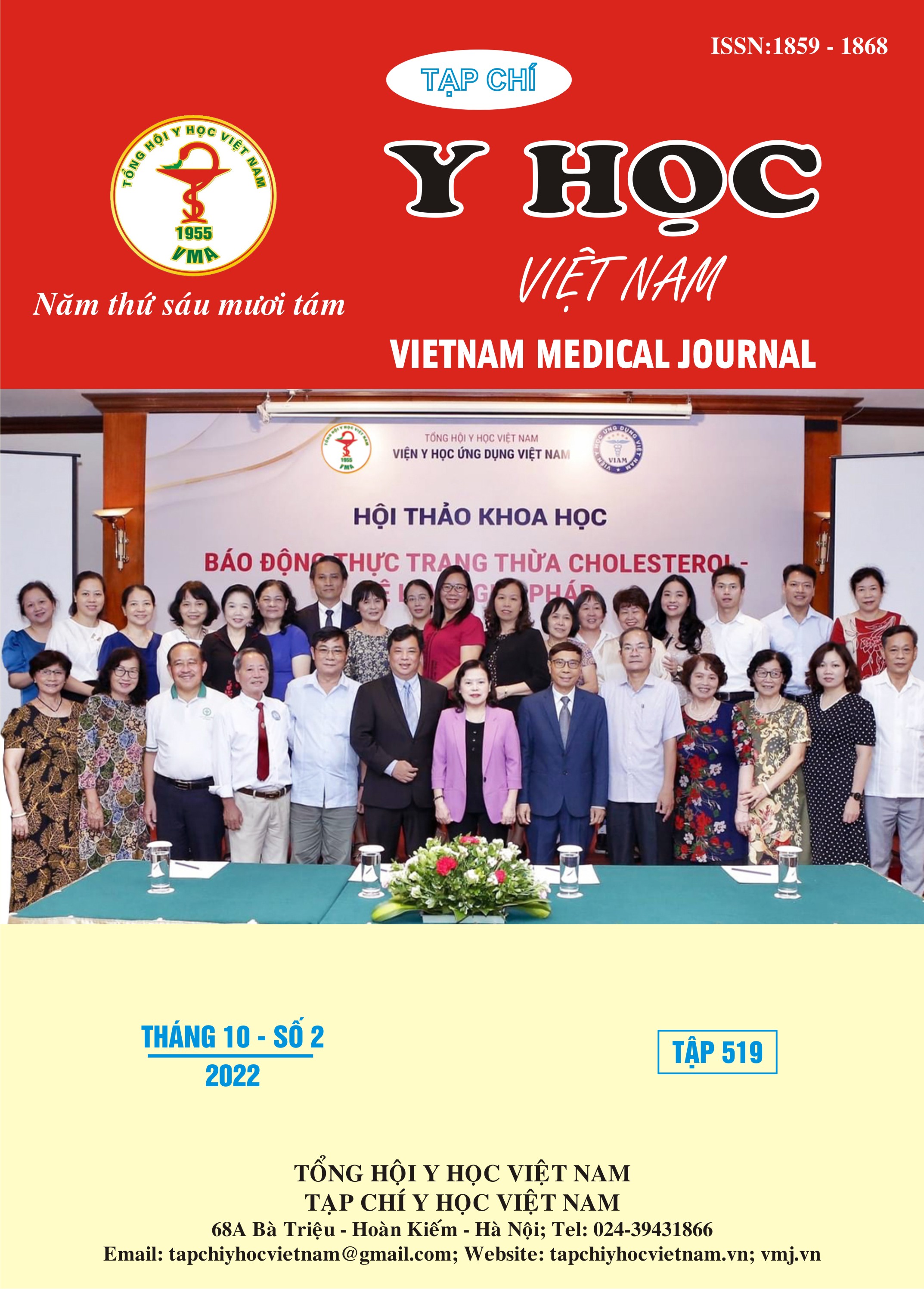THE CORRELATION OF MAGNETIC RESONANCE IMAGING – PATHOLOGICAL THIGH MUSCLES WITH CLINICAL AND LABORATORY FEATURES IN PATIENTS WITH POLYMYOSITIS AND DERMATOMYOSITIS
Main Article Content
Abstract
Objectives: 1/ Describe clinical, magnetic resonance, and anatomical characteristics of femoral muscle disease patients with polymyositis and autoimmune dermatomyositis at the Department of Musculoskeletal - Bach Mai Hospital. 2/ Find the relationship between clinical, magnetic resonance, and anatomical femoral myopathy in patients with polymyositis and autoimmune dermatomyositis at the Department of Musculoskeletal - Bach Mai Hospital in the researched patients. Subjects and research methods: A prospective, cross-sectional study was performed on patients diagnosed with polymyositis and dermatomyositis according to Bohan and Peter's criteria in 1975. The patients were examined for clinical examination, hematology, biochemistry, pathology, femoral magnetic resonance, and electromyography. Research results: 1) Clinical characteristics of muscle damage: mean muscle strength is 58.68 ± 7.30, mean muscle pain VAS is 5.38 ± 1.66, and average muscle inflammation accounts for the proportion. 46.6% high, and the main symptom of muscle weakness was 96.9%. 2) Characteristics of subclinical lesions: muscle edema is the primary lesion detected on MRI images of the thigh muscle at 65.6%, the late stage has muscle atrophy at 15.6%, and fat degeneration at 9.4%. Regarding muscle histopathology, the most common injury characteristics are inflammatory cell invasion, degeneration, regeneration, and proliferation, with 62.5%, 81.3%, 68.8%, and 78.1%, respectively. The rate of detection of muscle damage on MRI images of the thigh muscle correlates with increased CK concentration.
Article Details
Keywords
polymyositis, dermatomyositis, muscle magnetic resonance imaging, histopathology, muscle biopsy
References
2. Maillard SM, Jones R, Owens C, et al. Quantitative assessment of MRI T2 relaxation time of thigh muscles in juvenile dermatomyositis. Rheumatol Oxf Engl. 2004;43(5):603-608. doi:10.1093/rheumatology/keh130
3. Wangkaew S, Suwansirikul S, Aroonrungwichian K, Kasitanon N, Louthrenoo W. The Correlation of Muscle Biopsy Scores with the Clinical Variables in Idiopathic Inflammatory Myopathies. Open Rheumatol J. 2016;10:141-149. doi:10.2174/1874312901610010141
4. Nguyễn Thị Phương Thủy. Nghiên cứu đặc điểm lâm sàng, cận lâm sàng và một số thay đổi miễn dịch trong bệnh viêm đa cơ và viêm da cơ. Luận văn tiến sĩ y học; 2015.
5. Phạm Thị Minh Nhâm. Mô tả đặc điểm lâm sàng, cận lâm sàng biểu hiện tổn thương cơ ở bệnh nhân viêm đa cơ, viêm da cơ được điều trị tại bệnh viện Bạch Mai. Tạp Chí Học Việt Nam. 2019;478-Số đặc biệt:103.


